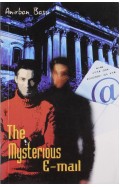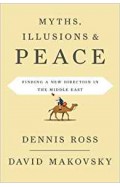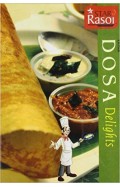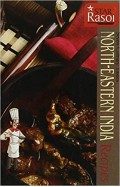- Home
- Books
- Sale
- 11.11 Sale UPTO 90% OFF
- 25% OFF
- Dear Mr. Picasso - An Illustrated Love Affair with Freedom
Dear Mr. Picasso - An Illustrated Love Affair with Freedom
By: Fred Baldwin
-
Rs 13,496.25
- Rs 17,995.00
- 25%
You save Rs 4,498.75.
Due to constant currency fluctuation, prices are subject to change with or without notice.
Baldwin’s life changed. He followed his dream, used his imagination, overcame fear, and acted – now he felt could accomplish anything. This account takes the reader to high adventure worldwide, but also to disaster and failure. This illustrated love affair with freedom shows how a camera became a passport to the world. But the trip started much earlier.
The son of an American diplomat, who died when Baldwin was five, the book describes being raised by strong aristocratic southern women. A string of disasters associated with six elite boarding schools and one university led to his exile to work in his u ncle’s factory in Savannah, Georgia. Baldwin escaped by joining the Marines and was immediately s hipped to North Korea in 1950, where he was w ounded and decorated twice.
After Korea, Baldwin moved to Paris but shortly after returned to a junior college i n Georgia, won a scholarship to Harvard and then transferred to Columbia, where he decided to go to Europe to celebrate his last summer vacation of freedom. Meeting with Picasso inspired Baldwin to teach himself photography by visiting MoMa and every photo gallery in New York. But New York was expensive, so Baldwin moved to Savannah, where he learned to survive by photographing local children. It worked, but i n spite of financial success, Baldwin wanted to be a photojournalist. By chance he spent a day an d a night with the Ku Klux Klan, then headed for Scandinavia and the Arctic. What followed were picture stories about reindeer migrations, Nobel Prize coverage, underwater pictures of cod fishing in Arctic Norway, polar bear expeditions. In 1963, Baldwin join ed the Civil Rights Movement, photographing Martin Luther King. A two - year stint as Peace Corps director in Borneo was followed by more photojournalism in India and Afghanistan.
The stories in this book are often laced with self - deprecating humour, a mec hanism that Baldwin had developed early as a survival tool.
Baldwin’s life changed. He followed his dream, used his imagination, overcame fear, and acted – now he felt could accomplish anything. This account takes the reader to high adventure worldwide, but also to disaster and failure. This illustrated love affair with freedom shows how a camera became a passport to the world. But the trip started much earlier.
The son of an American diplomat, who died when Baldwin was five, the book describes being raised by strong aristocratic southern women. A string of disasters associated with six elite boarding schools and one university led to his exile to work in his u ncle’s factory in Savannah, Georgia. Baldwin escaped by joining the Marines and was immediately s hipped to North Korea in 1950, where he was w ounded and decorated twice.
After Korea, Baldwin moved to Paris but shortly after returned to a junior college i n Georgia, won a scholarship to Harvard and then transferred to Columbia, where he decided to go to Europe to celebrate his last summer vacation of freedom. Meeting with Picasso inspired Baldwin to teach himself photography by visiting MoMa and every photo gallery in New York. But New York was expensive, so Baldwin moved to Savannah, where he learned to survive by photographing local children. It worked, but i n spite of financial success, Baldwin wanted to be a photojournalist. By chance he spent a day an d a night with the Ku Klux Klan, then headed for Scandinavia and the Arctic. What followed were picture stories about reindeer migrations, Nobel Prize coverage, underwater pictures of cod fishing in Arctic Norway, polar bear expeditions. In 1963, Baldwin join ed the Civil Rights Movement, photographing Martin Luther King. A two - year stint as Peace Corps director in Borneo was followed by more photojournalism in India and Afghanistan.
The stories in this book are often laced with self - deprecating humour, a mec hanism that Baldwin had developed early as a survival tool.
Dear Mr. Picasso - An Illustrated Love Affair with Freedom
By: Fred Baldwin
Rs 13,496.25 Rs 17,995.00 Ex Tax :Rs 13,496.25
Zubin Mehta: A Musical Journey (An Authorized Biography)
By: VOID - Bakhtiar K. Dadabhoy
Rs 472.50 Rs 1,050.00 Ex Tax :Rs 472.50
Myths Illusions and Peace: Finding a New Direction for America in the Middle East
By: Dennis Ross
Rs 876.00 Rs 1,095.00 Ex Tax :Rs 876.00
The Origins of Political Order From Prehuman Times to the French RevolutioN
By: Francis Fukuyama
Rs 3,116.00 Rs 3,895.00 Ex Tax :Rs 3,116.00
Manning Up: How the Rise of Women Has Turned Men into Boys
By: Kay Hymowitz
Rs 646.75 Rs 995.00 Ex Tax :Rs 646.75
The Obama Syndrome: Surrender At Home War Abroad
By: Tariq Ali
Rs 1,036.00 Rs 1,295.00 Ex Tax :Rs 1,036.00
The Quest For Meaning: Developing A Philosophy Of Pluralism
By: Tariq Ramadan
Rs 1,116.00 Rs 1,395.00 Ex Tax :Rs 1,116.00
No similar books from this author available at the moment.
No recently viewed books available at the moment.
Zubin Mehta: A Musical Journey (An Authorized Biography)
By: VOID - Bakhtiar K. Dadabhoy
Rs 472.50 Rs 1,050.00 Ex Tax :Rs 472.50
Dear Mr. Picasso - An Illustrated Love Affair with Freedom
By: Fred Baldwin
Rs 13,496.25 Rs 17,995.00 Ex Tax :Rs 13,496.25













-120x187.jpg?q6)







-120x187.jpg?q6)





